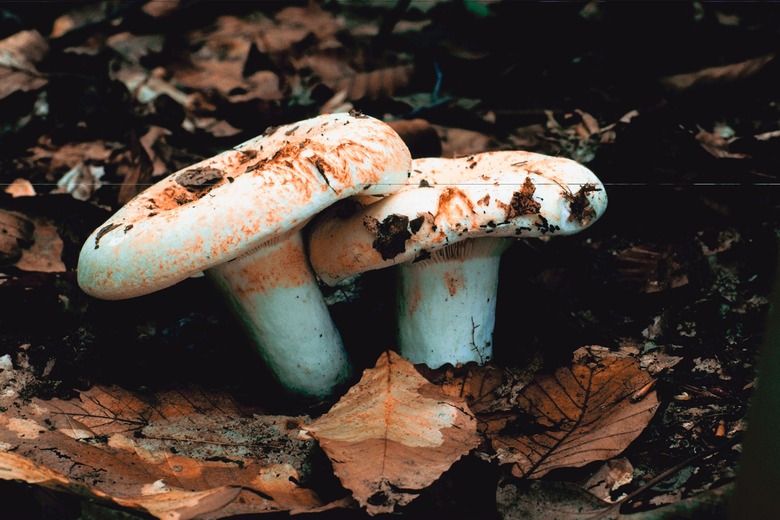What Are Mycelia In Microbiology?
The fungi kingdom sits on the border between plants and animals and between micro- and macro-biology. The mycelium, plural mycelia, exemplifies how the microscopic elements of fungi can combine to form a larger whole. Mycelia are the diffuse vegetative parts of multicellular filamentous fungi.
Filamentous fungi can be divided into microfungi and macrofungi, but the mycelia of both groups have similar form and function. They are made up of a network of threads that are often too fine to be seen by the naked eye, known as hyphae.
Microbiology Isn't Just About Bacteria
Microbiology Isn't Just About Bacteria
Microbiology is often mistakenly described as the study of bacteria. Microbiology is actually defined as the study of microorganisms in general. While bacteria do make up a large portion of microorganism species, other microorganisms include fungi, protists, viruses and algae.
Mycelia is specific to fungal microorganisms like mushrooms and molds.
Networks of Hyphae and Hyphal Fragments
Networks of Hyphae and Hyphal Fragments
Hyphae are compartmentalized tubes that grow out into food sources in order to digest and absorb nutrients. Fungi are heterotrophs, which means that they need to digest other organisms to get their energy. They can digest tough foods such as dead trees and insect carapaces.
Hyphae grow out from the end of the tube and can branch, forming networks of threads, each not more than one hundredth of a millimeter (0.0004 inches) in diameter. In total, this network is known as the mycelium. Hyphae are why the mold on your bread looks fuzzy.
These tubes and threads are essentially "mushroom roots". However, they aren't true roots like the ones plants have. They do have similar function to roots, but are technically a separate and distinct structure.
Mycelia Growth and Function
Mycelia Growth and Function
As a mycelium grows out into a substrate it excretes enzymes at the tips of its hyphae that digest the substrate into a form that can be absorbed by the fungus. The more nutrients are in the substrate, the more branches the mycelia forms to take advantage of the food source.
Mycelia move out from the location of the original fungal spore, but since it uses up all of the nutrients in the center, the middle of the circle gets cannibalized, causing a ring-like pattern recognizable in fairy rings and ringworm infections.
Examples of Microfungi Mycelia
Examples of Microfungi Mycelia
The ability of the mycelium to spread through a substrate as they digest it makes filamentous microfungi both important decomposers and parasites. There are over 13,000 species that have been identified in the United States, but that likely represents only a tiny fraction of the species out there.
The mycelia of Phytophthora infestans spreads through potato tubers. This causes the potatoes to rot as the fungus takes the nutrients from the tuber. This is actually the cause of the famous Irish potato famine from 1845-1849.
The mycelia of Trichoderma reesei, a fungus that breaks down dead plant matter, excretes three different types of cellulase to fully digest the cellulose in its food supply.
When Mycelia Become Macroscopic
When Mycelia Become Macroscopic
The mycelia of most fungi are microscopic, but there are times when mycelia form larger conglomerate structures. The structure that is most familiar is the fruiting body, or mushroom, a reproductive structure used to disseminate spores to new environments. Fungal mycelia can also form rhizomorphs, or cords of bundled hyphae, and sclerotia, or structures that anchor the fungus and store nutrients to use during adverse conditions.
While the individual hyphae are microscopic, a single honey mushroom is actually the largest and oldest known living organism, spread over 890 hectares (2,200 acres) of ground and dubbed the humongous fungus.
Cite This Article
MLA
Becker, Andrea. "What Are Mycelia In Microbiology?" sciencing.com, https://www.sciencing.com/mycelia-microbiology-16448/. 19 June 2019.
APA
Becker, Andrea. (2019, June 19). What Are Mycelia In Microbiology?. sciencing.com. Retrieved from https://www.sciencing.com/mycelia-microbiology-16448/
Chicago
Becker, Andrea. What Are Mycelia In Microbiology? last modified August 30, 2022. https://www.sciencing.com/mycelia-microbiology-16448/
